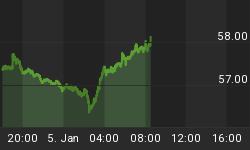The March employment report was a huge miss. What does it mean for the U.S. economy and the gold market?
The BLS reported on Friday that payroll employment increased just by 126,000 in March, significantly below expectations for job gains of 245,000. It was the lowest monthly increase since March 2013. Employment data based on the Household Survey was even worse, with only 34,000 people found jobs in March. Adding to the bad news, the BLS revised lower job gains in January and February by 69,000, which means that over the past three months, job gains have averaged only 197,000 per month. What is more, the goods-producing industries (mining, manufacturing, and construction) saw job losses in March, which may signal the global slowdown and the recessionary pressures in the U.S. economy.
The unemployment rate was unchanged at 5.5 percent, but mostly because people gave up looking for jobs. The labor force participation rate fell 0.1 percentage points in March, from 62.8 percent to 62.7 percent, to a level seen back last time in 1978. It may be important, because a low labor force participation rate may exert some downward pressure on the wage growth in the future. However, in March the rise of wage growth by 0.3 percent month-to-month and 2.1 percent year-to-year.
What does the March employment report mean for the U.S. economy and the gold market? As we have constantly pointed out, the market reaction after the February's job market was a bit exaggerated, because the U.S. labor market is far from a full recovery and it is not as strong as the February employment report might suggest. It seems that after March employment report, markets have finally noticed it. The U.S. equity futures initially fell on concerns about the U.S. economy's conditions, while the gold prices increased on expectations that the Fed will postpone or softer the hike of interest rates. Although the Fed officials have continued to signal that September hike remains the baseline, the markets do not believe in such scenario any longer. For example, the Goldman Sachs' analysts believe "that the right policy would be to put hikes on hold for now". The probability of the September's hike (estimated from Fed's funds futures) fell from 49 percent on March 19 to only 28 percent today.
To sum up, the March employment report has confirmed that the U.S. labor market is far from full recovery and the economy may fall into recession, which would delay or soften the Fed's tightening. We will have a broader view after today's release of Fed's Labor Market Conditions Index and the April employment report (one month proves nothing). What is certain is that the recent environment of economic slowdown and low real interest rates is very good for the gold prices, which rose by 1 percent to a seven-week high on Monday, surging higher away from the key $1200 level.
Thank you.
Thank you for reading the above free issue of the Gold News Monitor. If you'd like to receive these issues on a daily basis, please subscribe. In addition to these short daily fundamental reports, we focus on the global economy and the fundamental side of the gold market in our monthly gold Market Overview reports. We also provide Gold & Silver Trading Alerts for traders interested more in the short-term prospects. If you're not ready to subscribe yet, or are unsure which product suits you, we encourage you to sign up for our mailing list and receive other free alerts from us. It's free and you can unsubscribe anytime.















